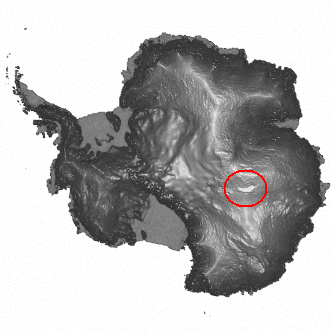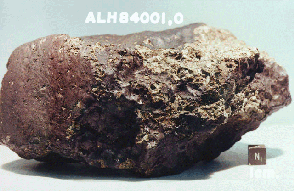Vostok — The Lake of Shadows (Antarctica)
Table of Contents
∘ New Antarctica Mystery
∘ A Truly Stygian Lake
∘ A Continent of Magic and Terror
∘ Was Atlantis in Antarctica?
∘ The Magnetic Anomaly
∘ Two Million Nazis
∘ Lady Kadjina
∘ The Interrupted Press Conference
· Conclusion
∘ UFO Over Antarctic — Stops, Goes, Maneuvers
∘ At The Mountains Of Madness
∘ Piri Reis Map
∘ 6 July, 1960Subject: Admiral Piri Reis Map
∘ Arctic Fabulous — Speculative Fiction and the Imaginary Arctic
Doubt of the real facts, as I must reveal them, is inevitable; yet if I suppressed what will seem extravagant and incredible there would be nothing left.
~H. P. Lovecraft
The inspiration for this article began in the summer of 1996, when a series of email messages began to appear suggesting the possibility that “someone” or “something” was surreptitiously removing all recent maps of Antarctica.
The notion was so outrageous that even die-hard conspiracy theorists found themselves having to clarify the subject — it wasn’t that Big Brother and his henchmen were ripping map pages out of every World Almanac and atlas in the country, it had merely become harder to obtain recent maps on Antarctica.
Intrigued by the electronic statements, I placed a call to Penn-Oh-West Maps in Pittsburgh to check on the availability of Antarctic projections. The storeowner’s response was startling:
“Sorry, sir. All our new maps of South Pole are on back order. Must be some kind of problem with the USGS.”
The United States Geological Service, or USGS, produces the most detailed maps available, such as the 7.5-minute series topographic maps at a 1:20,000 scale.
Nor is the USGS planet-bound — their expertise extends to detailed maps of the Moon, Mars, and Venus.

ALH 84001 was found in Antarctica during the 1984–1985 Antarctic summer.
It was found by a team of meteorite hunters from the ANSMET program, which is sponsored by the Polar Programs Office of the U.S. National Science Foundation. ANSMET stands for ANtarctic Search for METeorites, and has been funded since 1977 by the NSF.
It is nearly certain that ALH 84001 is from Mars, even though people have never been to Mars and no rocks have ever been collected on Mars. In fact, there are 11 other meteorites, called the SNCs, that are also almost certain to be from Mars.
The strongest evidence for their Martian origin is that they, including ALH 84001, contain traces of gas that is just like the Martian atmosphere. We know the composition of the Martian atmosphere, because the Viking Lander spacecraft analyzed it, on Mars, in 1976. The Martian atmosphere is really different from the Earth’s atmosphere, or Venus’, or any other source of gas that has ever been found.
To get off Mars, ALH84001 must have left its surface going faster than Mars’ escape velocity, about 5 kilometers per second (about 11,000 miles per hour). The only known natural process that can get rocks moving so fast is meteorite impact — volcanoes can not throw rocks fast enough.
If a large enough meteorite or asteroid hit Mars, some rocks nearby on Mars’ surface would be blasted up faster than the escape velocity and could leave Mars completely. The best estimates are that an asteroid bigger than about 1/2–2 kilometers could launch rocks like ALH 84001 off Mars and into space.
After it left Mars, ALH 84001 orbited the Sun on its own, like a small asteroid. It started out with an orbit nearly like Mars’. But its orbit changed each time it passed close to Mars or collided with an asteroid. Also, gravity from the planets (especially from enormous Jupiter) slowly nudged ALH 84001 farther and farther from Mars.
By chance, the orbit of ALH 84001 changed enough so that it came near the Earth’s orbit. 13,000 years ago, the Earth and ALH 84001 collided.
New Antarctica Mystery
A new meteorite that came from Mars has been discovered by US scientists in Antarctica, the US space agency NASA announced.
The meteorite was found by a field party from the US Antarctic Search for Meteorites program (ANSMET) on December 15, 2003, on an ice field in the Miller Range of the Transantarctic Mountains, roughly 750 kilometers from the South Pole.
The 715.2 gram black rock, officially designated MIL 03346, was one of 1,358 meteorites collected by ANSMET during the 2003–2004 austral summer, said the National Aeronautics and Space Administration.
Scientists at the National Museum of Natural History involved in classification of Antarctic finds said the mineralogy, texture and the oxidized nature of the rock are unmistakably Martian.
The new specimen is the seventh recognized member of a group of Martian meteorites called the nakhlites, named after the first known specimen that fell in Nakhla, Egypt, in 1911.
Nakhlites are thought to have originated within thick lava flows that crystallized on Mars approximately 1.3 billion years ago and sent to Earth by a meteorite impact about 11 million years ago.
Daily Times for July 22, 2004
“Piece of Mars found in Antarctica”
This leaves unanswered the question of how this rock crossed 52 million miles of space and arrived on Earth.
Maybe a UFO landed on Mars, and the rock became lodged in its landing gear. Later, as the saucer was making its final approach into an alien base in Antarctica, the rock came loose and landed in the ice field.
In short, the rock came to Earth the same way the dandelion came to North America — by ship.
Reflecting on the situation, I thought that the changes on the seventh continent are so few that they hardly justify the creation of new maps.
If someone desperately needed a map of the South Pole, it would suffice to resort to a National Geographic map or to the nearest Rand McNally atlas. But could the polar conspiracy theorists be onto something?
The matter of polar cartography was soon forgotten — at least for me — until in 1999, the media trumpeted news of a truly sensational discovery: a lake whose waters had never seen the light of day, at least not for millions of years, a few miles beneath the polar icecap.
The new body of water was christened with the name of the Russian experimental station located immediately above it: Vostok.
Keep reading with a 7-day free trial
Subscribe to Mysteries of the World to keep reading this post and get 7 days of free access to the full post archives.





